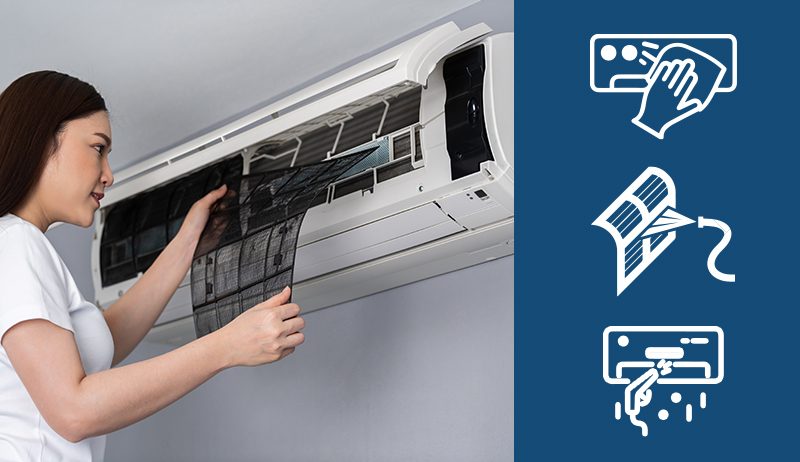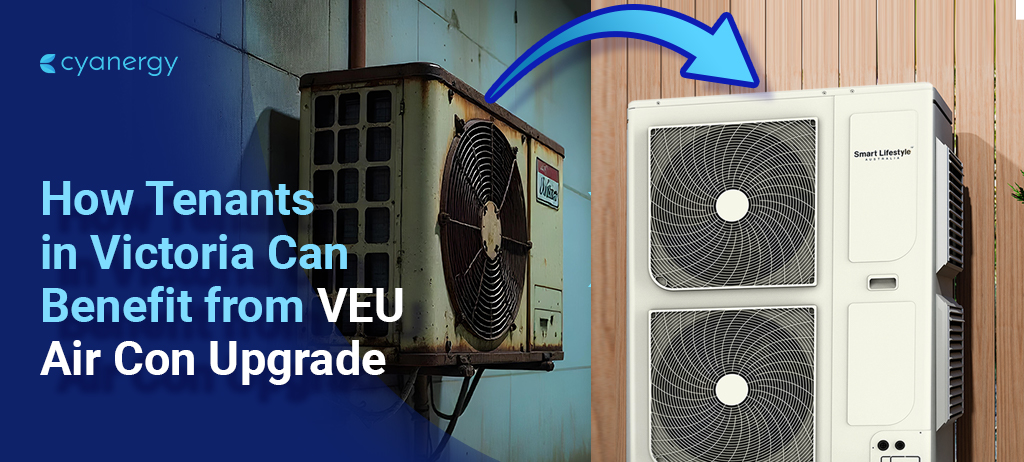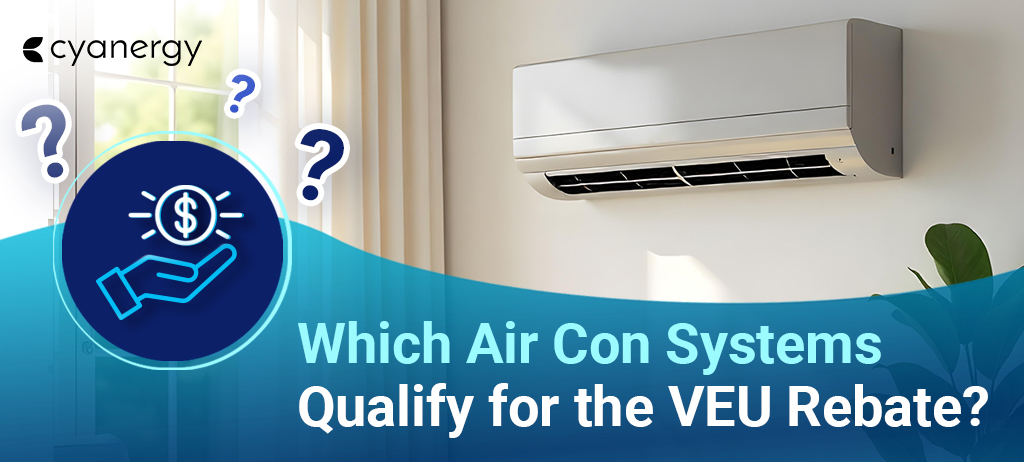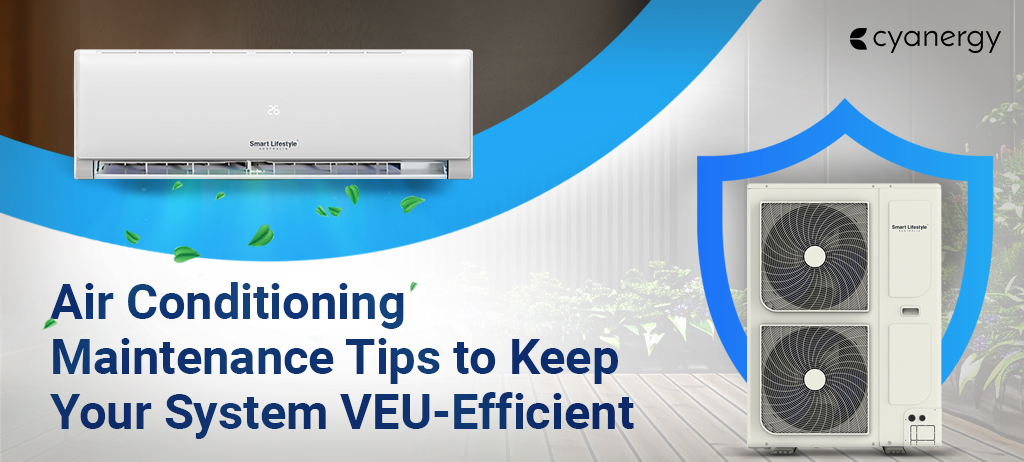Imagine having an air conditioner at home or work in a hot summer. You’re probably enjoying nice, cool air all year long.
But what if your AC unit blowing warm air during the summer? If your AC is constantly blowing warm air, something is clearly wrong.
Here are 7 common reasons your AC is blowing warm air and not cooling the room as it should. We will also try to answer some common questions about it.
How do you fix it so it cools the room properly again? And what if it keeps blowing hot air, no matter your settings or temperature?
You should schedule a maintenance appointment with Cyanergy, but in the meantime, you’re wondering what the problem might be.
But First, the Basics of an Air Conditioning System
An air conditioning system cools the air inside your home or office, making it more comfortable during hot weather. The system has a few essential components that help it work.
First, there’s the evaporator, which is usually inside the house. This part takes in the warm air from the room and cools it down using a special liquid called refrigerant. The refrigerant absorbs the heat, turning it into a gas.
Next, the compressor, located outside the house, plays a key role. It squeezes the gas from the evaporator, making it even hotter. This hot gas is then sent to the condenser.
The condenser, also outside, cools the gas down by releasing the heat into the air outside. As the gas cools, it turns back into a liquid. The liquid refrigerant then goes back into the system to repeat the process.
Finally, the cooled air is blown back into the room through vents, lowering the temperature. The air conditioner system has a thermostat that you can set to control how cool or warm you want the room to be.
In Australia, air conditioners can cool and heat, making them useful all year round. During winter, the system works in reverse, heating the air inside. Air conditioners help keep homes and offices comfortable, no matter the season.
Types of AC Units in Australia
Several air conditioning systems are commonly used in homes and offices in Australia, each designed to suit different needs and spaces.
One popular type is the split system. This system has two main parts: an indoor unit and an outdoor unit.
The indoor unit cools or heats the air inside, while the outdoor unit releases the heat outside. Split systems are great for cooling or heating one room or a specific area of the house.
Another option is a multi-split system, which works similarly to a split system but can connect multiple indoor units to one outdoor unit. This lets you cool or heat many rooms simultaneously without requiring multiple outdoor units.
A ducted air conditioning system is another common choice. In this system, a central unit is connected to a series of ducts hidden in the ceiling or walls.
The air is distributed throughout the house, making it ideal for simultaneously cooling or heating large spaces or multiple rooms. This type of system is often found in larger homes or commercial buildings.
There are also small portable air conditioners that can be moved from room to room. They are easy to set up and don’t require installation, but they are usually less powerful and only suitable for cooling smaller spaces.
Finally, window air conditioners fit into a window or wall opening. They are more common in older homes and are designed to cool a single room.
Each type of air conditioner has advantages, depending on the space size and how much temperature control you need.
How Does Air Conditioning Work? The Science Behind AC System

Air conditioners come in different shapes and sizes, but all work similarly. They use a special liquid called refrigerant to remove heat from your home or office and blow cool air inside through vents.
Turning on your AC blowing hot air keeps repeating this process until the room is as cool as possible. Warm air inside the house is pulled into the AC and passes through a cold coil filled with refrigerant.
The refrigerant absorbs the heat, turning from a liquid into a gas, and the cooled air is sent back into the room.
The refrigerant gas is then sent to the outside unit, where it is compressed. A large fan pulls in outdoor air, which cools down the refrigerant, turning it back into a liquid and releasing the heat outside. The process repeats to keep the indoor space heated or cooled.
7 Common Reasons Your AC Is Blowing Warm Air
Condenser Coils are Dirty or Blocked
One reason for warm air could be dirty or blocked condenser coils. These coils are in the outdoor unit; the air conditioner can’t cool properly if dust or debris is blocking them.
You can clean the area around the outdoor unit yourself, but it is recommended that you have the condenser coils professionally cleaned at least once a year. Ensure plants and other things are kept from the unit for good airflow.
Refrigerant Leaks
Air Filters are Dirty or Need Replacing
If your air conditioner is set to cool but blowing warm air, there’s a problem. A common reason for this is dirty or old filters. Filters are the first defence against dust and bacteria in the air.
When they get dirty, airflow is blocked, and the system can’t cool the air properly. It can also make the unit noisy and lead to health issues like asthma and allergies.
You can clean the filters by removing the front grille, locating the filter panel, and vacuuming the dust.
You can wash the filters with lukewarm water and mild soap and let them dry in the shade. If that doesn’t help, you might need to replace them, so it’s best to call an expert.
Damaged Compressor
If your air conditioner is blowing hot air even though the thermostat is set correctly, it could indicate a damaged compressor.
If basic maintenance, like cleaning the filters and coils, doesn’t help, it’s time to call an expert. A broken compressor can prevent the unit from cooling properly, and the sooner you get it fixed, the better.
The Return Duct is Broken or Disconnected
Evaporator Coils Have Frozen
The Outside Unit Not Getting Enough Power

What to Do When Your AC Blows Hot Air
Check the Thermostat Properly
Ensure your thermostat is set to “cool” and the temperature is low enough. Sometimes, kids or simple mistakes can change the settings, so double-checking and adjusting it might fix the issue quickly.
Check the Breaker Switch
Most AC systems have both an outdoor and indoor unit. If the indoor unit works but the outdoor one has no power, the AC might blow hot air.
Check the breaker switch. If it has tripped, flip it back to “on” and let the AC run for a few minutes. If it trips again, contact a professional.
Check the Filter
Check for Ice on the Outdoor Unit
If you find ice on your AC, turn it off and let it melt completely. Check the air filter to make sure it’s not causing the problem.
Install a clean filter once the ice has melted, and try turning the AC back on. If it’s still not working, call a professional for help. Avoid picking or chipping the ice, as it can damage the system.
Check for Debris Around the Outdoor Unit
Keep Your AC Running Smoothly with Regular Maintenance

Your AC blowing hot air, still? Take some extra steps to prevent it.
Regular Maintenance: Schedule an inspection and cleaning every spring to catch minor issues before they become big problems.
ENERGY STAR Appliances: These appliances use less energy, helping to keep your home cool while saving on electricity costs.
Improve Insulation: Insulation keeps the cool air inside. Spray foam insulation is an excellent option because it can be added to existing structures and provides a tight seal to keep your home comfortable.
Contacting Cyanergy is the best option for you. You can even talk to an expert! Get a free quote TODAY!







